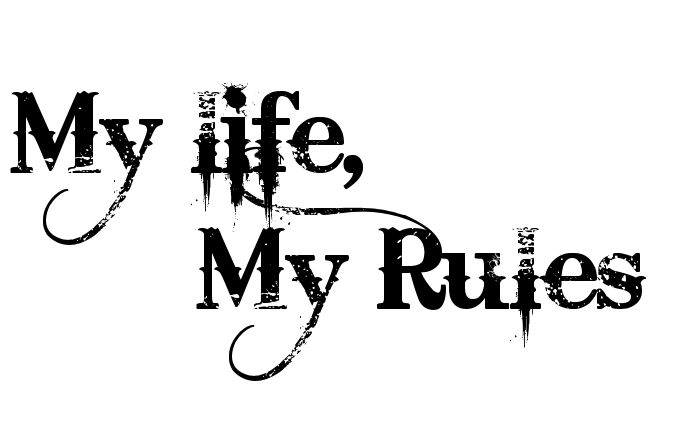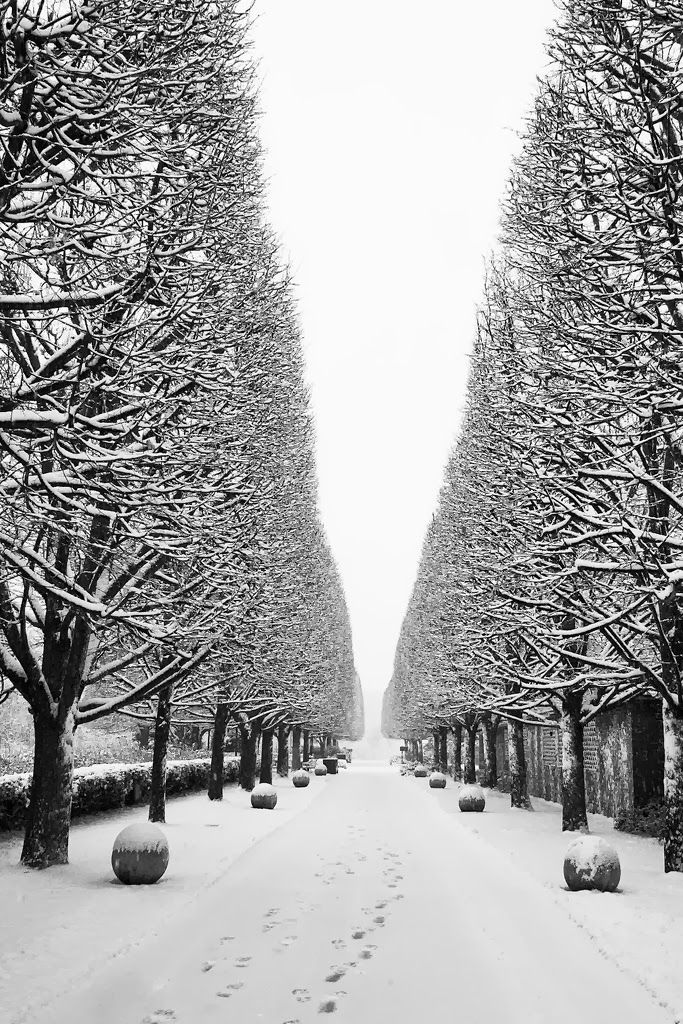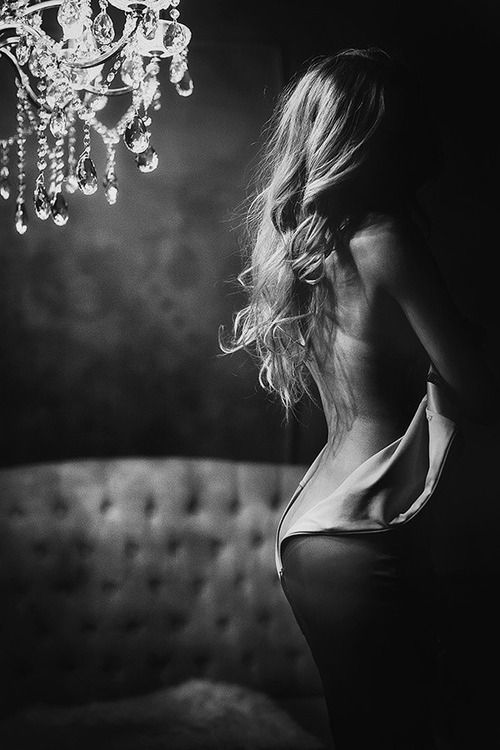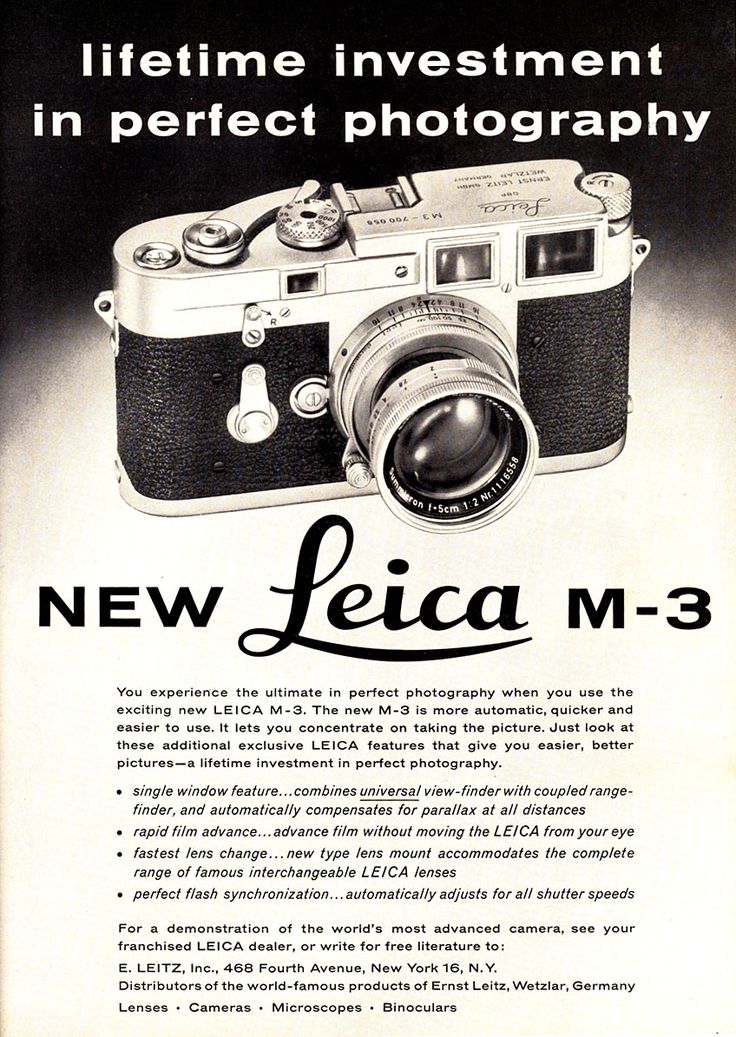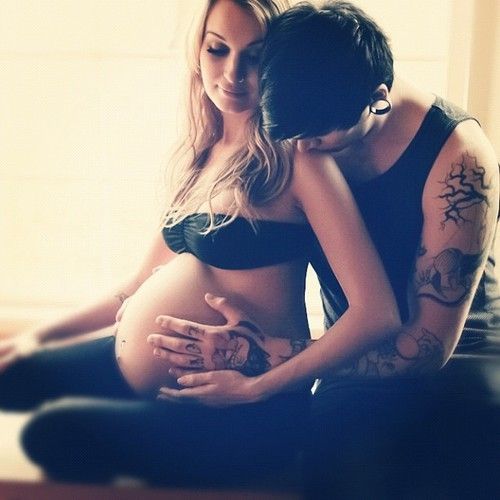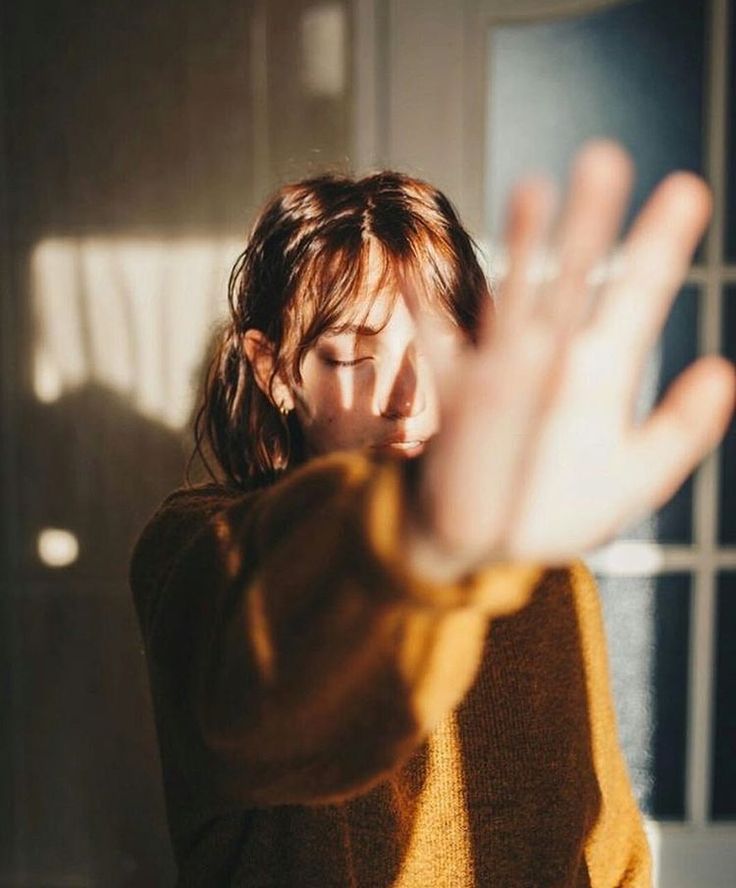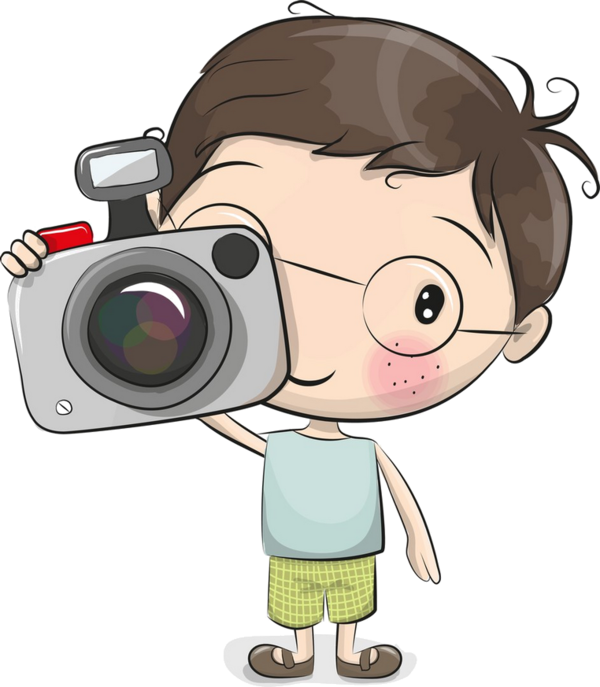Canon vs nikon colors
Why Are Canon & Nikon So Different in Photo Color? | Small Business
By Kenneth Hamlett
Canon and Nikon represent the two largest consumer and professional grade camera equipment manufacturers in the world. The photographic world basically falls into these two communities -- Nikon lovers and Canon lovers. Both companies offer exceptional equipment, but for years the imaging characteristics, especially the color quality, achieved by these two brands get constantly compared with each other.
Image Processor
-
Images produced by a Canon camera do not have the same color characteristics as an image produced by a Nikon camera. Why? Many factors affect image color, but look at the fundamentals of each camera. Nikon and Canon digital cameras use mathematical algorithms to produce an image. The technology behind Nikon's image processing system is called EXPEED, which are algorithms are optimized for each Nikon camera and gets applied to every aspect of image processing.
Canon's processing technology is called DIGIC, which works as the brain of Canon digital cameras. The lens and the camera's sensor make up the other two factors that determine how a camera interprets color.
It's All Math
-
During the days of film photography the main factors that determined how color was rendered in a scene were the choice of film and the lens used. The camera body had less to do with color interpretation than it does today. Now, with digital cameras every camera manufacturer uses preassigned algorithms to interpret color. One company might have a penchant for color that's more highly saturated than another company. When it creates its algorithms this penchant for color saturation becomes part of the image processing technology that creates the image. Manufacturers must adhere to standards, but the overall process of color interpretation remains very subjective.
Lens Choice
-
Canon and Nikon make wonderful optics.
 Within each company some lenses produce brighter, more colorful images than other lenses. Also, the age of the lens and the type of lens in use also becomes a factor in the final color rendition of an image. Older lenses that don't have the sophisticated optical coatings found on today's lenses do not produce images as vivid as lenses designed and manufactured today. Canon's lenses have a reputation for producing very vivid, contrasty images. Nikon's lenses have a reputation for producing exceptionally sharp images with more of a neutral color tone. The debate has waged on for years and years about which company has better lenses and to date neither company has won.
Within each company some lenses produce brighter, more colorful images than other lenses. Also, the age of the lens and the type of lens in use also becomes a factor in the final color rendition of an image. Older lenses that don't have the sophisticated optical coatings found on today's lenses do not produce images as vivid as lenses designed and manufactured today. Canon's lenses have a reputation for producing very vivid, contrasty images. Nikon's lenses have a reputation for producing exceptionally sharp images with more of a neutral color tone. The debate has waged on for years and years about which company has better lenses and to date neither company has won.
Sensor Technology
-
Canon and Nikon use complementary metal-oxide semiconductor sensor technology. The major differences in color happen between CMOS and charge-coupled device technology. Although both companies use CMOS technology they do not use the same CMOS sensors. This difference results in the sensors “seeing” light differently and sending that different information to the processing engine.
 The processing engine then interprets the information and produces the final image.
The processing engine then interprets the information and produces the final image.
Summary
-
Although Canon and Nikon “see” color differently, either system produces exceptional images. The final color rendition of a digital image has more to do with the processing that happens after image capture than it does during image capture. Choosing one system over the other really comes down to personal preference because you can't go wrong with either.
References
- Nikon USA: DSLR Series EXPEED by Nikon
- Canon:Canon Technology - The Minds Behind the Magic
Writer Bio
From 2002-2006, Kenneth Hamlett was publisher and head writer for UNSIGNED Music Magazine, an online publication with over 100,000 readers. Prior to establishing UNSIGNED, Hamlett was a business solutions analyst and spent 15 years formulating and writing proposals for supply chain business solutions. He is a graduate of the New York Institute of Photography.
A Nikon User's Week With Canon
I just wrapped up the end of my first full week of shooting with a Canon 5D Mark II in my bag.
Why is this interesting to anyone? I shoot Nikon. I’ve always shot Nikon. I recently needed to add a third body as a back up to my D800E and D800 combo, and rather than going with another Nikon body, I gave into temptation. I broke the sanctity of manufacturer loyalty and went with a slightly used Canon 5D MarkII. Why did I do it? Well, let me explain.
Quick Background
To give a brief history of my Nikon career, I purchased my first DSLR only three years ago, and started my photography business just a little over a year ago. I’m not your typical Nikon fanboy, even though I do love the gear that I shoot with. I never chose to shoot Nikon because I felt it was better than Canon. I started with Nikon and stayed with it because that’s what I knew. My first body was the D60, quickly followed by the D90. Then came the transition to fullframe a year later to the popular D700, the main competitor to the Canon 5D Mark II.
When I started my business a little over a year ago, I upgraded to the D800 and D800E, selling my D700. My decision to go with the 36mp Nikon body is not always popular among wedding photographers.
Many Nikon shooters, as well as Canon shooters, have put down the D800 and D800E as wedding cameras. But I absolutely love them as my primary bodies. The colors and skin tones are much more pleasing over my previous D700, and with the necessary memory upgrades, file size isn’t an issue.
Why I Tried Canon
As weddings picked up and business continued to grow, the addition of a third body was needed. I’ve always liked the colors and skin tones produced by the Canon bodies, and have always been a big fan of the awesome landscape images they’ve produced over the years.
The need for a third body came up, and I had about $2000 to spend. Rather than add a used D700 or new D600 into the mix, I found a good deal on a Canon 5D Mark II and went with it. Staying in my price range, I was able to pick up a new 50mm f/1. 4 to use temporarily until I could afford one of the F/1.2 L series lenses I had always been intrigued by.
4 to use temporarily until I could afford one of the F/1.2 L series lenses I had always been intrigued by.
My decision to go with a used 4-year-old 5D Mark II over the similarly priced newer 6D was strictly based on the reviews I had read stating that the 5D Mark II was a more professionally built body. Its popularity with wedding photographers shooting Canon over the past 4 years also helped its case.
After picking up the Canon 5D Mark II and the 50mm F/1.4, I immediately started going through the menu in the camera, setting everything up to be similar to the settings I’m accustomed to with my Nikons. Fast forward a full week of shooting, which included a large wedding, two maternity shoots, two baby shoots, and here we are…
Now remember, I purchased this body to serve as a back-up or third body, but I shot with it a lot this week to get used to the Canon system. At each shoot, I brought along my D800E and my new Mark II, alternating the two of them, except for the wedding which I rotated in the D800 body. Remember that I was not comparing the Mark II head-to-head with my D800s. Instead, I was strictly trying out one of Canon’s all-time great DSLRs, with a complete understanding that I was shooting an older system that had been replaced with the new 5D Mark 3.
Remember that I was not comparing the Mark II head-to-head with my D800s. Instead, I was strictly trying out one of Canon’s all-time great DSLRs, with a complete understanding that I was shooting an older system that had been replaced with the new 5D Mark 3.
Things I like
Colors and skin tones – Just like I had thought by looking at other photographers’ images shot by Canon, the colors are different when compared to Nikon’s colors. I prefer the Canon colors over the Nikon colors. Yes, I know you can adjust the HSL in post, but I’m strictly talking about RAW files straight out of the camera.
RAW Files – Nikon/CanonBuild – While Nikon cameras are built like tanks, there’s also a nice benefit to having a lighter camera when being on your feet all day at an event. While it’s not a huge difference, the 5D MarkII feels much lighter than both my D800s and my old D700, with a weight of 850g compared to 1000g. I know the MarkIII is a bit heavier though.
I know the MarkIII is a bit heavier though.
Does it feel good in my hands? Yes, but not as good as my Nikon bodies. I know the MkIII is built a little better, but overall I enjoy shooting with the MarkII when its in my hands. Its comfortable to hold as well as being lighter.
Total Recall Modes – This is huge, and although I haven’t had the chance to take full advantage of this, I’ve set them up. This is a huge benefit to someone like myself that can shoot a wedding and a meteor shower in the same weekend. Being able to save ALL your settings is an awesome AWESOME feature that Nikon doesn’t offer. Yes, you can save most of your settings with Nikon bodies, but not like this. This is the way to go.
Lens Selection – Nikon doesnt offer a F1.2 lens besides their older manual focus versions. I’m looking forward to trying out the 50mm F/1.2 and 85mm f/1.2 L series lenses.
Image Quality – I can’t make a fair comparison between the 36mp D800 and the Canon 5D MarkII, but to be honest, I was pretty impressed for a 4 year old sensor.
Something Simple – Lenses mount the right way, by tightening them to the right. It’s always annoyed me that Nikon lenses mount on by turning them to the left, ass backwards from the way we mount and dismount, just about everything else in life.
Things I don’t like
Auto ISO – When initially setting up the Canon 5D MarkII, I went to set the Auto ISO and was surprised to find that theres nothing more to it than just turning it on or off. With my Nikon bodies, I like having the ability to set the thresholds. This isn’t that big of a deal, just something I was surprised to find. I shoot mostly in Manual Mode and set my ISO manually, but there are times that I like to switch it to Auto and make life a little easier.
Auto Focus – I had always heard that Nikon’s AF was better, but I never really understood exactly how, so this was something I was eager to test out. The first thing I noticed was the focus area was much smaller and condensed towards the center of the frame. There was also only has 9 focus points, which is a lot less than what I’m used to with my Nikon bodies, but to be honest the joystick control makes it easier to navigate. I don’t have to click twice to get to the outer points with the Canon, like I do with the Nikon. So, while the AF area was a little smaller, it wasn’t as bad as I expected. To be honest, it just made me more frustrated that neither manufacturer has released a fullframe AF, besides in Live View, with focus points out to the edges of frame.
There was also only has 9 focus points, which is a lot less than what I’m used to with my Nikon bodies, but to be honest the joystick control makes it easier to navigate. I don’t have to click twice to get to the outer points with the Canon, like I do with the Nikon. So, while the AF area was a little smaller, it wasn’t as bad as I expected. To be honest, it just made me more frustrated that neither manufacturer has released a fullframe AF, besides in Live View, with focus points out to the edges of frame.
It wasn’t until I started shooting that I began to realize the MkII’s AF struggles. At the first shoot I used it on, I setup a shot with my subject at the far left. Using the outer focus point in somewhat bright sunlight it struggled to lock on. I quickly tried the far right focus point instead and same thing. The middle point was fine. Now I’m not saying it wouldn’t lock on at all, it just wasn’t as fast as Im used to with my Nikon bodies. After a few shots I got frustrated and grabbed my D800. My main complaint with the AF after my first week of use isn’t so much the lack of focus points or smaller area, its the struggles with locking on, especially when using the outer AF points, no matter the light conditions. The good thing is I’ve heard that the MkIII has made great improvements in this area though.
My main complaint with the AF after my first week of use isn’t so much the lack of focus points or smaller area, its the struggles with locking on, especially when using the outer AF points, no matter the light conditions. The good thing is I’ve heard that the MkIII has made great improvements in this area though.
Banding – This is a new word to me, and I only learned of it after searching on different words that I could think of that described what I seen on my images that I had never seen before. Once I found it, read about it, and now know that it’s a common problem with the Canon sensors, I gotta say…I don’t like it. I could see if it happened at extremely high ISO, but I had it appear with images at low ISO, such as 200. This is something that really shocked me, as it is something that I never seen from my Nikon images, and I still haven’t found a good way to hide it. I read that this is something that still occurs with the MkIII, which I’m surprised to hear.
Something Simple – The On/Off switch, I still can’t used to it’s placing. I prefer the location of the on/off switch on the Nikon bodies, as I still can’t quite learn how to switch it without using both hands.
Conclusion
The true Canon competitor to my D800 and D800E is the 5D MarkIII, but I wasn’t looking for the best that Canon had to offer. I was simply looking to add a third body while getting a taste of the popular and reliable 5D series camera bodies.
The 5D line is one that is ranked at the top among wedding and portrait photographers and has been extremely popular since the release of the 5D Classic in 2005, and now I can see why. After I purchased my first fullframe DSLR, the Nikon D700, I became a fan of the images that it’s main competitor the 5D MarkII was putting out. I could see the differences in the images, especially when it came to colors, and was always impressed with the resolution it put out.
Since I’m also a big landscape and nightscape junkie, the D700 never impressed me with its resolution when compared to the MarkII, and I had often been envious of the detail it produced it’s images. When both manufacturers upgraded their popular full-frame DSLR bodies, I was impressed with the newer Nikon models immediately purchasing the D800, but I was also happy to see the price of the MkII drop down. With everyone looking to ditch their MkIIs for the new and improved MkIIIs, I knew it would only be a matter of time before I broke down and picked one up. So when the need for a third body came up and I could justify it financially…I jumped on it.
When both manufacturers upgraded their popular full-frame DSLR bodies, I was impressed with the newer Nikon models immediately purchasing the D800, but I was also happy to see the price of the MkII drop down. With everyone looking to ditch their MkIIs for the new and improved MkIIIs, I knew it would only be a matter of time before I broke down and picked one up. So when the need for a third body came up and I could justify it financially…I jumped on it.
Yes, there were things I didn’t like about the MarkII in the first week, but there was also a lot that I did like. Where the MkII fell short, such as in dynamic range and in low light performance, it made up for in other areas such as color and skin tones as well as it’s total recall modes. Would it have made more sense for me to stick with Nikon for a third body along with all of my Nikon glass? Probably. Do I think the decision to add a 4 year old Canon 5D MarkII to my bag was a good one? Absolutely. It’s an awesome camera, and after a week I feel really comfortable and confident shooting with it. Has the Canon 5D MarkII earned a permanent spot in my previously all Nikon camera bag? Yes it has, and I have a feeling it will see a lot more use then originally thought. Now the question is…how long will I go before wanting to upgrade to the MarkIII?
Has the Canon 5D MarkII earned a permanent spot in my previously all Nikon camera bag? Yes it has, and I have a feeling it will see a lot more use then originally thought. Now the question is…how long will I go before wanting to upgrade to the MarkIII?
what is the significant difference, which is better? (Part 2)
Which is better nikon or canon ? Read the beginning here.
Canon is a much more global company than Nikon. Canon makes printers, cameras, video equipment, binoculars, calculators and more. Nikon, a company with a completely different approach to business. It focuses almost exclusively on cameras (although they also make sports optics and scanners). This factor does not give either of them an additional advantage, but indicates the difference in the views of the two corporations on business. Canon may have the advantage of greater resources given the size and capabilities of the huge company. Nikon can have the advantage of focusing on one core product rather than squandering their talents on small things. nine0005
nine0005
Prevalence and coolness of the brand. Perhaps Canon's famous oversized cream lenses are more memorable than Nikon's black telephoto lenses. But this does not affect the quality in any way, sports photographers use both.
Canon claims that white lenses are not really fashionable, but just an engineering solution to reduce the temperature of the camera in the sun. The statement is debatable, but the fact is that the cream tint of L-lenses makes them more noticeable and famous. nine0005
Entry level cameras.
Canon and Nikon have very good entry-level DSLRs. I know what it's like to choose your first DSLR. Especially if the budget is limited. In general, it is difficult to recommend something, as the lines are constantly updated and something newer and more interesting comes out. However, I once settled on Nikon. I can’t say that everything was cloudless, and there was even a repair (factory marriage). But I'm still happy with this brand. The only thing I can say is that it is better to take the carcass (body) in the store, and not from the hands. Because the presence of a factory warranty will save you from unexpected expenses in the event of a marriage or breakdown. And they happen to both companies. SLR cameras are generally very “gentle”, and it happens that they break, no matter how sad it is. nine0005
The only thing I can say is that it is better to take the carcass (body) in the store, and not from the hands. Because the presence of a factory warranty will save you from unexpected expenses in the event of a marriage or breakdown. And they happen to both companies. SLR cameras are generally very “gentle”, and it happens that they break, no matter how sad it is. nine0005
I think after all the comparisons you will understand that both are better :) But you need to choose so that your soul and hand lie to your camera. I want to say to novice photographers that you should not think that an expensive camera works wonders and all pictures are magical. This is not true. The Photographer creates miracles, and the camera only helps him in this.
There is another misconception that it is impossible to shoot well with standard kit lenses. Maybe!
And one more thing... From my personal observations. Canon and Nikon have quite different color reproduction. Nikon's colors are more natural, Canon's are more saturated, bright, and contrasty. Green lawn at Canon will be juicier, but skin tones are less natural. This is all solved when processing photos, but still it has a place to be. nine0005
Green lawn at Canon will be juicier, but skin tones are less natural. This is all solved when processing photos, but still it has a place to be. nine0005
For beginner photographers I would recommend:
- Nikon D3X00 series with Kit 18-55 VR (or VR II) lens. VR stands for stabilizer inside the lens, which is very good when shooting without a tripod. It is absolutely wonderful if the kit comes with a Kit 18-105 VR or Kit 18-140 VR lens. They will initially give you more opportunities for creativity. At the same time, buying a Kit lens as a kit is always much more profitable than buying a lens and a carcass separately. These include Nikon D3100 (out of production), D3200, D3300, D3400. If possible, take the model that came out last. Usually, it takes into account the shortcomings of the previous ones, and adds new "buns". nine0030
- A higher level will be cameras of the Nikon D5X00 series. These are Nikon D5200 (out of production), D5300, D5500. You can see how the models differ on the official Nikon website.
As for the lenses, everything is exactly the same as for the Nikon D3X00.
Among Canon, pay attention to these models:
- Canon EOS 1200D. The EF-S 18-55 IS II lens is better than the 18-55 DC III Kit.
- Canon EOS 100D Kit 18-55 IS.
- Canon EOS 700D. nine0033
Nikon SLR cameras and Canon SLR cameras at good prices and with free delivery to almost any city in Russia, I usually ordered in Svyaznoy, sometimes you can save a lot there if you get into a Promotion or Sale. When ordering through the site, there is usually an additional discount of 3-5%. Since DSLRs start at $30,000, the savings can be significant. And you pick up your order at the nearest Svyaznoy store, which is quite convenient. In addition, a branded online store nikonstore.ru has now appeared (not so long ago there was no such store) with delivery throughout the Russian Federation. In general, this is what I recommend from personal experience. Another large selection of cameras on catphoto. nine0005
nine0005
The purpose of this article was to inform you of some of the differences, not to sway you one way or the other. If you have something to say, feel free to write in the comments. Tell others about your personal experience, your advice will help someone a lot.
Sofia Rozanovskaya
Canon or Nikon? We put an end to the question
Who makes the best SLR cameras - Canon or Nikon? If there was an unequivocal answer to this question, one of the companies would have already left the market long ago. Indeed, Canon and Nikon make the best cameras, flashes and lenses, and they have been doing so for decades. Whichever brand you choose, you'll get a broad, well-supported system for every skill level, from beginner to pro. Onliner.by tried to understand the issue, evaluating the capabilities of modern SLR cameras of both systems. nine0005
Answering the question in the title, we are not comparing a camera with a camera, but a system with a system. Unlike other consumer electronics competitors, both Nikon and Canon have billion-dollar projects in semiconductor manufacturing and space programs.
Unlike other consumer electronics competitors, both Nikon and Canon have billion-dollar projects in semiconductor manufacturing and space programs.
There is an important difference between the companies: Canon has a wide portfolio of office equipment and a gigantic manufacturing facility, while Nikon's entire business is concentrated in the production of cameras, lenses and microscopes. Thus, one company has a strategic focus, while the other has a tactical focus. nine0005
Competitor history differs in another key way. Nikon started out as a manufacturer of expensive, high-end cameras for the military, and it was only with the release of inexpensive DSLRs that it gained consumer interest. Canon, on the other hand, started out as a manufacturer of cheap analogues of Leica rangefinder cameras and only in 1970 got into the professional segment.
Optics
Canon and Nikon have the widest range of optics available. All modern Canon EF and EF-S lenses have a built-in focus drive and are 100% supported by EOS SLR cameras. Nikon produces optics without a servo drive, you need to pick up a camera with a built-in motor called a “screwdriver” for it. As for the use of manual Soviet optics and lenses of other systems, then adapters for Canon EOS are easier to manufacture and cheaper. Adapters for Nikon require a corrective lens in the design - without it, it will not be possible to focus “to infinity”. nine0005
Nikon produces optics without a servo drive, you need to pick up a camera with a built-in motor called a “screwdriver” for it. As for the use of manual Soviet optics and lenses of other systems, then adapters for Canon EOS are easier to manufacture and cheaper. Adapters for Nikon require a corrective lens in the design - without it, it will not be possible to focus “to infinity”. nine0005
In general, for the entire range of popular lenses, similar models of Nikon optics will have to pay 15% more. Inexpensive Nikon lenses for APS-C SLR cameras are assembled much better than Canon counterparts - they do not creak or play. Expensive Nikon wide-angle and standard zoom lenses are sharper than Canon counterparts. The quality of telephoto lenses from both companies is excellent.
Canon's line of lenses includes such fast portrait lenses as the EF 50mm F/1.2 and EF 85mm F/1.2. Nikon does not have such fast optics, but its motivation in this case is worthy: the company does not want to produce optics that will not be ringingly sharp at an open aperture. nine0005
nine0005
Autofocus
Until 2012, Nikon was at the forefront: the engineered 51-point autofocus system excelled in dark and difficult conditions, it recognized the right faces with ease and produced 9 out of 10 sharp shots when shooting dynamic shots. It is for this reason that famous Russian bloggers and photographers Sergey Dolya and Ilya Varlamov decided to change the system from Canon to Nikon.
Canon EOS-1D X, however, managed to outperform its rival in the rivalry between flagships. The model received 61-point autofocus and ammunition of new algorithms that can adapt to the behavior of the object in the frame. It was the EOS-1D X that forced longtime Nikon fan and Photoshop guru Scott Kelby to change religion. nine0005
But in general, Nikon's autofocus is ahead in the segment: even the relatively inexpensive D5300 has 39-point autofocus here. Canon's autofocus often requires some tweaking, even on the EOS 5D Mark III.
Display
As a general rule, Canon puts 1,040,000-pixel displays on its SLR cameras. Cameras of the initial and middle price range can have a rotary design and touch control. Also, the screens of all modern Canon DSLRs are made of tempered glass, have an anti-reflective and oleophobic coating. The only exception here is the EOS 6D, which received a "poor" plastic display protection. The 3:2 aspect ratio allows Canon cameras to fully fit the frame into the screen, and when recording video, have additional fields for settings. nine0005
Cameras of the initial and middle price range can have a rotary design and touch control. Also, the screens of all modern Canon DSLRs are made of tempered glass, have an anti-reflective and oleophobic coating. The only exception here is the EOS 6D, which received a "poor" plastic display protection. The 3:2 aspect ratio allows Canon cameras to fully fit the frame into the screen, and when recording video, have additional fields for settings. nine0005
Nikon prefers 4:3 aspect ratio displays. The company's inexpensive cameras get a plastic screen protector.
Starting with the D7100, camera displays are also made of tempered glass, albeit without anti-reflective coating. Top-end Nikons get 3.2″ WRGB screens with a resolution of 1,229,000 dots.
Image quality
When it comes to image quality, Nikon cameras hold the palm in DxOMark tests. This popular test evaluates RAW files for the information that can be extracted from them. nine0005
In terms of image quality at low ISO, color depth and dynamic range, Nikon models successfully occupy the first lines of the rating. The closest competitor, the flagship Canon EOS-1D X, is in 30th place, behind even cameras with an APS-C sensor. In practice, the image quality at high ISOs is very good for both brands, and it will take a lot of work to find the difference between similar models.
The closest competitor, the flagship Canon EOS-1D X, is in 30th place, behind even cameras with an APS-C sensor. In practice, the image quality at high ISOs is very good for both brands, and it will take a lot of work to find the difference between similar models.
Video recording
Nikon D9 was the first DSLR with video recording capability0. The real boom in digital cinema and clips began with the release of the Canon EOS 5D Mark II, the first DSLR to support 1080p video recording. It was used in the shooting of "Dr. House", "The Avengers" and many other films. Nikon is slowly merging into the video industry (for example, using the D800 they filmed the TV series Dexter).
Both cameras are capable of outstanding results in the hands of a professional, but Canon is pushing the technology more confidently. The company's new Dual Pixel CMOS sensors finally allow smooth, hands-free focusing in video recording. Nikon's hybrid focus is only available on Nikon 1. 9 mirrorless cameras.0005
9 mirrorless cameras.0005
Country of manufacture
Nikon only manufactures flagship products in Japan, such as the D4S reportage camera. The rest of the cameras are produced in Thailand and China. Canon prefers to produce equipment at home: even the inexpensive EOS 650D is made in Japan. Canon's foothold for external production is Taiwan, a country with a highly skilled workforce and strict quality control. In our experience, the time from the announcement of a Nikon camera to its retail sale in Belarus takes longer, from two to four months. Canon products appear in the worst case after two months. nine0005
Spots on reputation
Both companies have them. Introduced two years ago, the Nikon D600 had a problematic shutter mechanism that threw oil droplets and microscopic pieces of abraded paint directly onto the sensor, which negatively affected the quality of the pictures. The company to the last kept a good face on a bad game. The turning point was the defeat of the D600 on Chinese television. The government of the country of victorious communism decided to ban the sale of the camera, to which Nikon immediately reacted with a campaign - all owners of the D600 received the right to a free shutter replacement. For some time, the D800 and D4 had low-quality displays that gave a greenish tint. nine0005
The government of the country of victorious communism decided to ban the sale of the camera, to which Nikon immediately reacted with a campaign - all owners of the D600 received the right to a free shutter replacement. For some time, the D800 and D4 had low-quality displays that gave a greenish tint. nine0005
Canon has been criticized for allergenic fading rubber in the EOS 650D and for problems with the construction of the EOS 5D Mark III. When the display backlight was turned on, the camera changed the exposure settings, which indicated that light was leaking inside. The problem was solved corny - sealed the screen with black tape.
Mirrorless
Canon was the last company to introduce its mirrorless. The EOS M has an 18MP APS-C sensor, a range of silent lenses and a compact body. The mirrorless camera immediately went nuts for a weak battery and slow autofocus. The new firmware completely solved the problem of slowness, but EOS M never saw the love of buyers. nine0005
nine0005
Nikon has perhaps the most authentic take on mirrorless cameras. The Nikon 1 mirrorless range consists of three models - aimed at the amateur photographer, professional and adventurer. The latter, the Nikon 1 AW1, can shoot underwater and is shockproof.
All cameras feature record-breaking frame rates of up to 20 frames per second with focus tracking and a 1 GB memory buffer. There are 10 lenses for Nikon mirrorless cameras. It would seem that everything is fine, but the entire line is built on a tiny 1″ CMOS sensor, which is significantly inferior in image quality to APS-C. As you can see, both companies did not succeed in this segment. Sony NEX mirrorless cameras, Olympus and Panasonic solutions look much more interesting. nine0005
Entry-level DSLRs
The cheapest brand DSLRs are built on an APS-C sensor, with a crop factor of 1.5x for Nikon and 1.6x for Canon. To attract buyers, Canon has three bait at once: the world's lightest and most compact DSLR EOS 100D, the inexpensive EOS 1200D and the self-sufficient 18-megapixel EOS 700D with a swivel touch screen and hybrid focus for video recording.
Nikon in this segment is represented only by the D3300, which quickly gained popularity. This camera received on board 24 megapixels, 11-point autofocus and continuous shooting at a frequency of 5 frames per second. nine0005
The camera does not have a low-pass filter, which makes it extremely attractive for those who like to photograph nature and cities rich in details.
Mid-range DSLRs
These cameras are also available with APS-C sensors, but have better and more comfortable bodies with improved ergonomics. Canon has one of its oldest cameras here, the EOS 7D, and a relatively young EOS 70D. The former has impressive performance for capturing action — 19-Point autofocus system and 8 frames per second shooting rate. The durable magnesium alloy body makes it the most affordable reportage camera available. The EOS 70D features a 20-megapixel phase-detection sensor, a convenient tilting screen and Wi-Fi.
Nikon introduces the D7100, the 24-megapixel flagship of its DX camera line (the line with an APS-C sensor). This model does not have the swivel display and Wi-Fi that we saw in the EOS 70D, but boasts a sensor without a low-pass filter and a 51-point autofocus system. nine0005
This model does not have the swivel display and Wi-Fi that we saw in the EOS 70D, but boasts a sensor without a low-pass filter and a 51-point autofocus system. nine0005
Another camera, the Nikon D5300, is closer in price to the cheaper Canon EOS 700D, but has an advanced 39-point autofocus, special effects mode, and a swivel display. Also, the camera has Wi-Fi for communication with a smartphone and GPS for marking pictures on a world map.
High end DSLRs
Both Canon and Nikon have only full-frame models in this undoubtedly hot segment. Let's look at the "initial class" in the face of the EOS 6D and D610. Cameras are very close in characteristics. The D610 has 24MP, 6fps burst shooting, dust and moisture protection, and two memory card slots. The EOS 6D only got 20MP, slower burst shooting, fewer autofocus points and one memory card, but it still has Wi-Fi and GPS. It is also much better suited for shooting in low light. nine0005
SLR camera Nikon D810 - champion in resolution among SLRs, as much as 36 megapixels! The 22-megapixel Canon EOS 5D Mark III looks pale, but makes up for it with 61-point autofocus and fast burst shooting.
It is noteworthy that 41 cross-type focus points are highly sensitive here, while only 15 points are especially sensitive in Nikon's 51-point autofocus. If you need a multi-purpose camera, then the Canon EOS 5D Mark III is the winner. If high detail is required, then the Nikon D810 has not yet come up with anything better. nine0005
Professional DSLRs
Professional DSLRs are the evolution of interchangeable lens cameras. They are distinguished by a high price: without $ 5000 in your pocket, you can not even think about buying such a device. Historically, perfect metering and flash performance have been Nikon's forte. Canon didn't fall behind with fast autofocus and powerfully stabilized lenses. The release of the Nikon D3 DSLR in 2007 took high ISO image quality and autofocus performance to new heights. After 7 years, the company is represented by the D4s camera, which provides a maximum ISO 409600 and continuous shooting at 11 frames per second.
Two reporter cameras are defending the Canon brand in the big leagues: the 18-megapixel EOS-1D X, capable of 14 fps, and the EOS-1D C, focused on shooting 4K video and Full HD movies at 60 fps.
